Let me be honest with you - I've made every mistake in the book when it comes to cleaning outdoor cushions. From ruining expensive fabrics with the wrong cleaners to watching mold take over my favorite outdoor bench cushions because I didn't dry them properly. But through years of trial and error (and quite a few costly lessons), I've figured out exactly what works and what doesn't.
Outdoor cushions add warmth and coziness to your home, but dust, dirt, and stains can make them look old and worn over time. Pollen, spilled food, and everyday grime can quickly affect their fresh appearance. Rain, sun, and wind can also damage cushions, which is why regular care is so important.
The good news? Cleaning patio cushions is easier than you think! With just a few simple steps, you can wash garden cushions, remove mold, and give them a fresh look again. Whether you want to know how to clean moldy garden cushions or garden seat cushions, this guide will show you the best methods to clean your cushions and maintain their like-new appearance.

Understanding Your Cushion Materials: The Foundation of Smart Cleaning
Before cleaning, it's crucial to know what material your cushions are made from. Different materials require different cleaning methods, and using the wrong cleaner can lead to damage. Knowing what fabric they're made from also tells you how often you need to clean them and how to keep them in good condition.
I can't tell you how many times I've seen people grab the first cleaning product they find and go to town on their expensive cushions, only to end up with faded, damaged fabric. Trust me, spending five minutes checking the care label can save you hundreds of dollars in replacement costs.
Here's a simple guide to common outdoor cushion materials and how I approach cleaning each one:
Polyester is sturdy, lightweight, and water-resistant. It's easy to clean and can be washed with mild soap and water. However, too much sun can cause it to fade, so you should move it occasionally. I've found that polyester cushions are pretty forgiving - they can handle a bit more scrubbing than other materials, but they do show water spots if you don't rinse thoroughly.
Acrylic lasts long, retains its vibrant colors, and doesn't fade easily. It dries quickly after washing, making it excellent for outdoor use. Some models have a special coating that prevents stains, but this can wear off and requires more care. Solution-dyed acrylics like Sunbrella are my personal favorite - they're basically bulletproof when it comes to cleaning.
Olefin is robust and prevents stains, fading, and mold. It's excellent for garden furniture and is one of the best upholstery materials for humid places where mold formation on cushions is common. If you live in a coastal area or somewhere with high humidity, olefin cushions are your best friend.
Cotton blends are soft and comfortable but easily absorb water. They can develop mold and need special care, such as waterproofing them to keep them lasting long. Cotton blends are beautiful but high-maintenance - I usually recommend them for covered areas only.
Knowing your cushion's material helps with choosing the right cleaning products and methods. For example, a polyester cushion can be washed with mild soap, but polyester blends need gentler treatment to avoid damage. Regular care guarantees that your cushions stay clean for a long time.
Essential Cleaning Supplies: Your Arsenal for Cushion Care
Before you start cleaning, gather all your supplies together. This makes the process faster and easier. You probably already have everything you need at home. If you store all your cleaning supplies in one place, like a box, cleaning will be even easier next time.
I keep what I call my "cushion cleaning kit" in a plastic storage tub in my garage. It's got everything I need, and when it's time to clean my custom outdoor cushions, I just grab the whole thing and head outside. No running back and forth to find supplies!

Tools you need for cleaning:
Mild soap or dish detergent: Mild soap or dish detergent helps remove dirt and stains without further damaging the fabric. I personally swear by Dawn dish soap - it cuts through grease but is gentle enough for most outdoor fabrics.
Soft brush or sponge: These help remove stains without damaging the cushion material. A soft brush is ideal for thorough cleaning of cushions without causing wear. I like using an old toothbrush for detail work around seams and buttons.
A vacuum cleaner: A vacuum with a special fabric attachment removes dust, crumbs, and pet hair, ensuring better cleaning. Regular vacuuming also prevents dirt from getting into the fabric. If you don't have an upholstery attachment, a brush attachment works fine too.
Bucket with warm water: This is used to mix the cleaning solution. Warm water dissolves dirt and grime better than cold water. I prefer using a large bucket so I can submerge sponges completely without making a mess.
Garden hose: This tool rinses soap and dirt from cushions that can't be taken apart. It's best to use a hose with different pressure settings to avoid damaging soft textiles. A spray nozzle with multiple settings is essential - you'll want everything from a gentle mist to a strong spray.
Soft cloths/washcloths: Soft towels absorb excess water and help cushions dry quickly. Lint-free cloths also make rinsing easier. I keep a stack of old beach towels specifically for this purpose.
For stubborn stains, you'll additionally need these cleaning agents: A fabric cleaner specifically suitable for outdoor cushions or a vinegar-water mixture that helps against mold and mildew.
Baking soda: Helps with stain removal from cushions, eliminates odors from cushions, and provides a fresher scent. This stuff is magic for musty smells that sometimes develop in humid weather.
Rubbing alcohol: Helps remove ink/grease stains without soaking the fabric and keeps it dry. It's also great for disinfecting without over-wetting the cushion.
Using white vinegar: An excellent natural cleaner for removing mold from cushions and stubborn stains. The smell dissipates quickly once everything dries, and it's much safer than harsh chemicals.
Before cleaning, cover all surfaces to avoid damage. Always test cleaning agents first on small, non-visible areas. I learned this lesson the hard way when I bleached a perfect circle on the back of an expensive cushion!
Method 1: Cleaning Removable Outdoor Cushion Covers
If your outdoor cushions have removable covers, cleaning is significantly easier. Regular washing prevents stains and keeps them looking like new for longer. This is honestly my favorite type of cushion to deal with - it makes maintenance so much simpler.
Step 1: Remove the Covers
Check if your cushions have zippers or buttons that allow you to remove the covers. When in doubt, read the care instructions on the care label. Removing the covers prevents the cushion filling from getting wet or damaged during cleaning. If the inserts get wet, drying can take a long time and cause mold formation.
Here's a pro tip I wish someone had told me years ago: take a photo of how the cover sits on the cushion before you remove it. This makes putting it back on so much easier, especially with oddly-shaped cushions like my corner floor cushions.
Step 2: Shake Off Loose Dirt
A quick shake can remove a lot of dust and dirt before washing. Take the covers outside and shake them well to remove dust, crumbs, and other debris. This prevents loose dirt from getting into the fabric during washing. If you have pets, using a lint roller before washing can help remove fur and hair better.

Step 3: Wash the Covers
Keeping cushion covers clean makes them last longer and look fresh. The washing method depends on the fabric and the manufacturer's recommendations.
Machine washing: If the covers are machine washable, wash them on a gentle cycle with cold water and mild soap. Don't use bleach unless the care label says it's safe. I always wash cushion covers alone or with similar colors - mixing them with heavy items like jeans can cause damage.
Hand washing: If machine washing isn't possible, fill a bucket with warm water and mild soap and gently scrub the covers with a soft sponge. Don't twist them too hard, as this can stretch the fabric. Hand washing actually gives you more control and is often gentler on the fabric.
Step 4: Air Dry
Let the covers air dry completely. This prevents unpleasant odors and mold formation. After washing, lay the covers flat or hang them in a sunny spot to dry. Don't use a dryer unless the care label indicates it's safe. Putting damp covers back on can lead to mold and unpleasant odors.
To make outdoor cushions dry faster, place them in a windy location or use a fan. I've found that positioning them at an angle helps air circulation - don't just lay them flat on the ground where air can't circulate underneath.
Method 2: Cleaning Non-Removable Outdoor Cushion Covers
If your cushions don't have removable covers, cleaning requires a slightly different approach. This is where things get a bit more challenging, but don't worry - I've perfected this technique over the years. Here's how to clean non-removable cushion covers.
Step 1: Shake Off or Vacuum Dirt
Removing loose dirt makes cleaning easier and more effective. First, remove loose dirt, dust, and particles. Shake the cushions well or use a vacuum with a special fabric attachment to clean deep crevices and seams where dirt often hides. Regular cleaning helps prevent long-term stains.
I always start by giving my outdoor deep seat cushions a thorough vacuum. You'd be amazed at how much debris comes out of those deep crevices! Pay special attention to the areas where the cushion meets the frame - that's where most of the gunk accumulates.
Step 2: Prepare a Cleaning Mixture
The right cleaning mixture removes stains without damaging the fabric. Fill a bucket with warm water and mix in mild soap or an outdoor fabric cleaner. Don't use harsh chemicals, as these can weaken the material over time. Always follow the instructions on the cleaner's label for best results.
My go-to recipe is one gallon of warm water with about two tablespoons of mild dish soap. If I'm dealing with mildew, I'll add a cup of white vinegar to the mix. The vinegar smell goes away once everything dries, I promise!
Step 3: Scrub with a Soft Brush or Sponge
Gentle scrubbing helps clean the cushions thoroughly without damaging the fabric. Dip a soft brush or sponge into the cleaning mixture and scrub the cushions in circular motions. Pay special attention to stained or dirty areas. For stubborn stains, let the cleaning mixture sit for 10-15 minutes before scrubbing again.
Here's something I learned through experience - work in sections rather than trying to clean the entire cushion at once. This prevents the cleaning solution from drying on the fabric before you can rinse it off, which can leave residue marks.

Step 4: Rinse Thoroughly
Thorough rinsing removes all soap so dirt doesn't stick to the fabric later. After scrubbing, rinse the cushions with a garden hose until all soap is removed. Soap residue can attract more dirt over time and leave streaks or stains.
This step is absolutely critical - I can't emphasize it enough. Any soap left behind will act like a dirt magnet. I usually rinse for much longer than I think I need to, then rinse some more. The water should run completely clear before you stop.
Step 5: Dry in the Sun
Drying in the sun helps keep cushions fresh and kills germs. Place the outdoor cushions in a sunny location to dry completely. Sunlight not only dries them faster but also helps kill germs and mold. With thick cushions, turning them several times during drying can help them dry evenly.
If you don't have full sun available, don't panic. Good air circulation is almost as important as sunlight. I sometimes prop my cushions up at angles to maximize airflow, and I've even used a leaf blower on the cool setting to speed up the process!
Method 3: Removing Specific Stains from Outdoor Cushions
Mold, grease, food, or ink can leave stains on garden cushions. Here's how to clean moldy garden cushions and keep them looking like new. Different types of stains require different approaches, and knowing the right technique can mean the difference between saving your cushion and having to replace it.
Mold and Mildew: Mix one cup of vinegar with one gallon of warm water. Scrub the affected areas with a sponge. For stubborn stains, add baking soda before scrubbing. Rinse the cushions with clean water and let them dry in the sun.
Mold is honestly my biggest nemesis when it comes to outdoor cushions. I've found that catching it early is key - those little black spots might look harmless, but they spread fast in humid conditions. The vinegar solution works wonders, but for really bad cases, I sometimes have to repeat the process two or three times.
Grease Stains: Apply dish soap directly to the stain and gently scrub with a soft brush. Rinse with warm water and blot with a towel. If the stain persists, repeat the process before letting the cushion dry in the sun.
Grease stains used to terrify me until I learned this trick: don't add water first! Apply the dish soap directly to the dry stain and work it in with your fingers or a soft brush. The soap needs to emulsify the grease before you dilute it with water.
Food and Beverage Stains: To prevent spilled liquids from setting, blot them immediately with a clean cloth. Scrub the area with warm water and mild soap, then rinse thoroughly. Let the cushion air dry completely before using it again.
The key word here is "blot" - never rub a fresh spill! Rubbing pushes the liquid deeper into the fibers and can actually make the stain larger. I keep a stack of clean white cloths handy during outdoor parties for exactly this reason.
Ink or Stubborn Stains: Dab ink stains with rubbing alcohol - don't rub, as this can make the stain larger. Once the stain fades, rinse with warm water and mild soap. For more stubborn stains, you can try a stain remover for cushions, testing it first on an inconspicuous area.
Ink stains are tricky because your instinct is to scrub, but that just spreads the ink around. I use a clean white cloth with rubbing alcohol and dab from the outside of the stain toward the center. It takes patience, but it works!

Method 4: Preventing Future Stains and Damage
Regular care is crucial for the appearance and longevity of your outdoor cushions. With a few simple steps, you can significantly reduce the risk of stains and fabric damage. Prevention is honestly much easier than cleaning, and your future self will thank you!
Use Covers
Buying good, weather-resistant covers protects cushions from dirt, water, and sun. Covers act like protective barriers, prevent water penetration, and reduce the risk of mold. Store cushions on a covered patio, in a storage box, or weatherproof storage bag when not in use to make them last longer.
I invested in high-quality covers a few years ago, and it was honestly one of the best decisions I made for my outdoor space. Yes, they cost a bit upfront, but they've saved me from having to replace cushions multiple times over.
Apply Fabric Protection
Fabric protectors, such as waterproofing sprays, create a protective layer that protects outdoor cushions from liquids, stains, and dirt. For optimal effectiveness:
Choose a protector suitable for use with outdoor fabric cleaners. Apply it evenly over the entire cushion, following the instructions. Reapply every few months, especially after thoroughly cleaning the cushions, to maintain the protective layer.
I treat my cushions twice a year - once in spring when I bring them out of storage, and again in mid-summer. The difference in how water beads up and rolls off treated versus untreated fabric is incredible.
Wipe Up Spills Immediately
The faster you wipe up spilled liquids, the less likely they are to leave stains. By immediately blotting spilled liquids, you prevent them from penetrating deep into the fabric, making cleanup easier later.
I keep a "spill kit" in a basket near my outdoor seating area - just some clean cloths and a spray bottle with mild soap solution. When accidents happen (and they will!), I'm ready to deal with them right away.
Move and Flip Cushions Frequently
Outdoor cushions wear unevenly because they spend a lot of time in sunlight and are used frequently. Moving and turning the cushions every few weeks distributes wear evenly, reducing the risk of fading and fabric weakening in one spot.
This is especially important for my outdoor papasan chair cushions since they're always in the same position. I make it part of my weekly outdoor maintenance routine - flip and rotate all the cushions while I'm doing other yard work.
Store Cushions During Bad Weather
If you live in an area with very different seasons, use weatherproof storage boxes to protect them from rain and sun during outdoor storage. Frost and too much water can cause fabric deterioration or mold. Store in a dry, well-ventilated place to protect from weather elements.
I learned this lesson during my first winter as a homeowner. I left my cushions outside thinking they'd be fine, and by spring they were basically garbage. Now I have a dedicated storage system in my garage, and it's made all the difference.
Advanced Tips and Troubleshooting
After years of dealing with every possible outdoor cushion disaster, I've picked up some advanced techniques that most guides don't mention. These are the tricks that separate amateur cushion cleaners from the pros!
For cushions that smell musty even after cleaning, try this: sprinkle baking soda liberally over the entire surface and let it sit overnight. The baking soda absorbs odors that soap and water can't touch. In the morning, vacuum it all up and follow with your regular cleaning routine.
If you're dealing with water stains (yes, water can stain!), they're usually caused by minerals in hard water. Mix equal parts white vinegar and distilled water in a spray bottle, mist the stained area lightly, and blot with a clean cloth. The acid in the vinegar dissolves the mineral deposits.
For cushions that have lost their shape after washing, here's a professional secret: while they're still slightly damp, massage and fluff them by hand to redistribute the filling. Then prop them up in a way that allows air to circulate on all sides while they finish drying.

When to Call It Quits: Knowing When to Replace
Sometimes, despite our best efforts, cushions reach the end of their useful life. It's important to recognize when cleaning isn't enough and replacement is the better option. I've learned to spot the warning signs that indicate it's time to invest in new cushions rather than continuing to battle with damaged ones.
If the fabric is separating at the seams, if there are large areas where the color has faded unevenly, or if mold keeps returning despite repeated treatments, it might be time to start fresh. Similarly, if the cushion filling has become permanently compressed or lumpy, no amount of external cleaning will restore comfort.
When I do replace cushions, I've learned to invest in quality pieces that will last longer. That's actually how I discovered custom bench cushions - sometimes getting exactly what you need, made to measure, ends up being more economical in the long run than repeatedly replacing cheaper alternatives.
Conclusion: Your Path to Pristine Outdoor Cushions
Clean and well-maintained outdoor cushions not only look better but also extend their lifespan significantly. Regular cleaning prevents dirt buildup, protects the fabric, and keeps them soft and comfortable. Simple cleaning methods for outdoor cushions, such as quick cushion cleaning, proper drying techniques, and rapid stain removal, can help avoid long-term damage.
With some time and effort, you can maintain the color, feel, and longevity of your cushions, ensuring a fresh, beautiful outdoor space for relaxing and enjoying for years to come. The key is consistency - a little maintenance regularly beats marathon cleaning sessions any day.
Remember, every outdoor space is different, and what works for my setup might need tweaking for yours. Don't be afraid to experiment (safely!) and find the routine that works best for your specific cushions and climate. The most important thing is to start taking care of them now, before problems develop.
I hope this guide saves you from some of the mistakes I made over the years. There's nothing quite like the satisfaction of seeing your outdoor cushions look fresh and inviting after a good cleaning session. Trust me, your guests will notice the difference, and you'll enjoy your outdoor space so much more.
Ready to Upgrade Your Outdoor Comfort?
While proper cleaning can extend the life of your existing cushions, sometimes there's nothing quite like the fresh look and feel of brand new outdoor cushions. At Rulaer, we specialize in creating custom outdoor cushions that are designed to withstand the elements while providing exceptional comfort and style.
Our cushions are made with premium, fade-resistant fabrics that are specifically chosen for their durability and easy maintenance. Whether you need standard sizes or completely custom dimensions, we can create the perfect cushions for your outdoor space. Plus, with proper care using the techniques outlined in this guide, your Rulaer cushions will maintain their beauty and comfort for years to come.
Visit our collection today to explore our full range of outdoor cushions, from classic bench styles to unique custom shapes. Your perfect outdoor oasis is just a click away!
Frequently Asked Questions
How often should you clean outdoor cushions?
To keep your cushions always looking good, clean them every few months or when you notice dirt and stains. Regular cleaning prevents dirt from sticking and keeps them looking bright. However, I personally do a light cleaning monthly during peak season and deep clean twice per year.
Can you use bleach on outdoor cushions?
Only if the label says bleach is allowed. Bleach can weaken fabric and change its color, so it's better to use mild soap and water or an outdoor fabric cleaner for regular cleaning. Try a small bleach mixture on an inconspicuous spot before applying it to the entire cushion. Honestly, I avoid bleach entirely - there are safer alternatives that work just as well.
What's the best way to dry outdoor cushions?
Drying in the sun is the best method because it removes water quickly and prevents mold formation. Turn the cushions occasionally so both sides dry evenly. Make sure they're completely dry before using them again to prevent water residue and mold formation on the cushions. If you don't have full sun, good air circulation is the next best thing.
What should I do if my cushions develop a musty smell?
Musty smells usually indicate trapped moisture or mildew. Try the baking soda method I mentioned earlier - sprinkle it liberally over the cushion, let it sit overnight, then vacuum it up. Follow with a vinegar-water solution if the smell persists. Prevention is key here - always ensure cushions are completely dry before storing them.
Is it worth investing in expensive outdoor cushions?
In my experience, absolutely yes. Quality cushions made with solution-dyed fabrics and proper construction will last much longer and require less maintenance than cheap alternatives. When you factor in replacement costs over time, quality cushions often end up being more economical. Plus, they look better and are more comfortable throughout their lifespan.

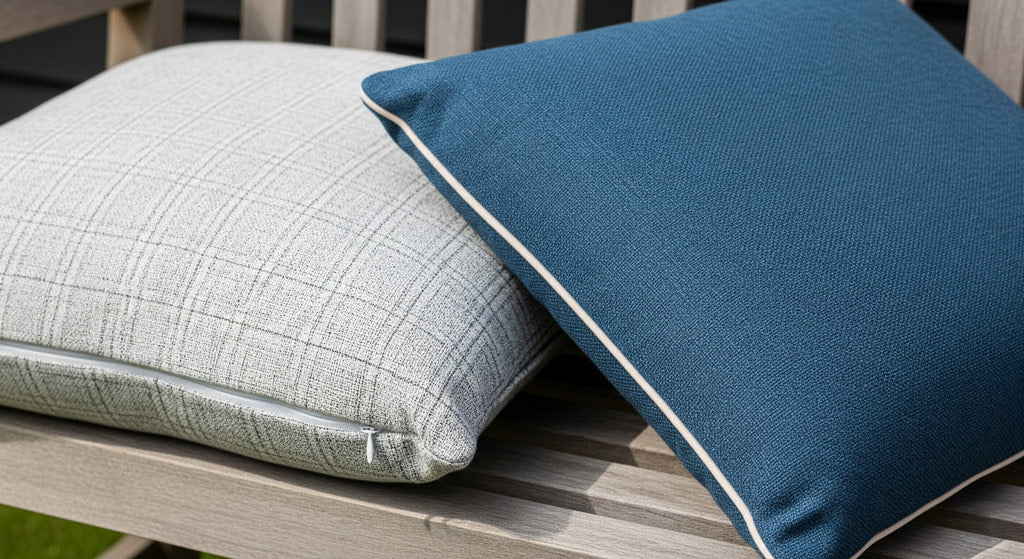
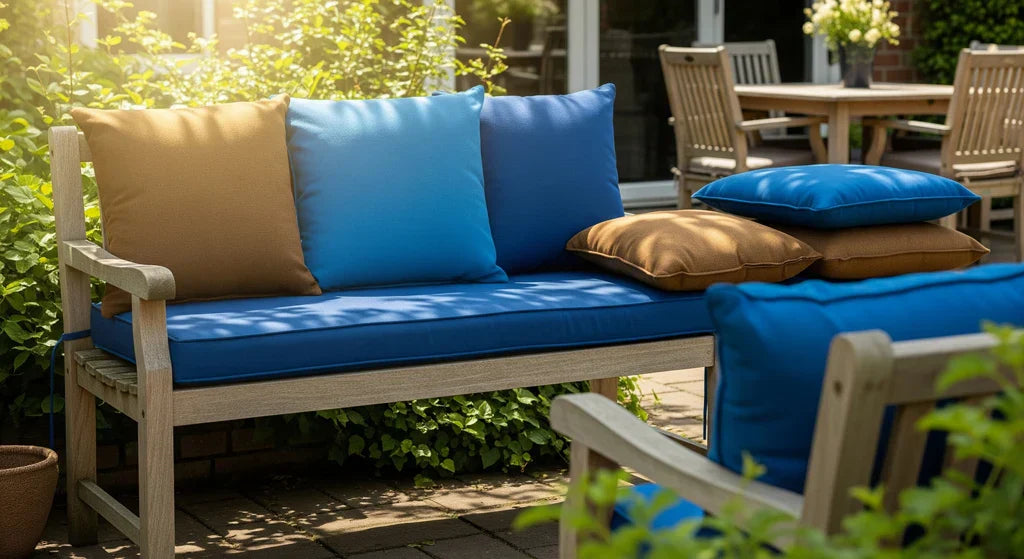
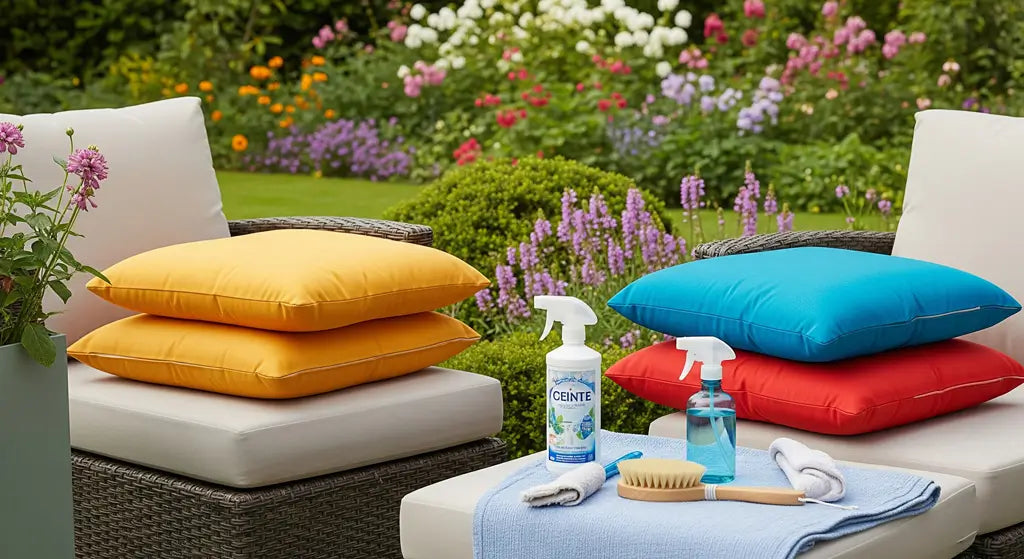
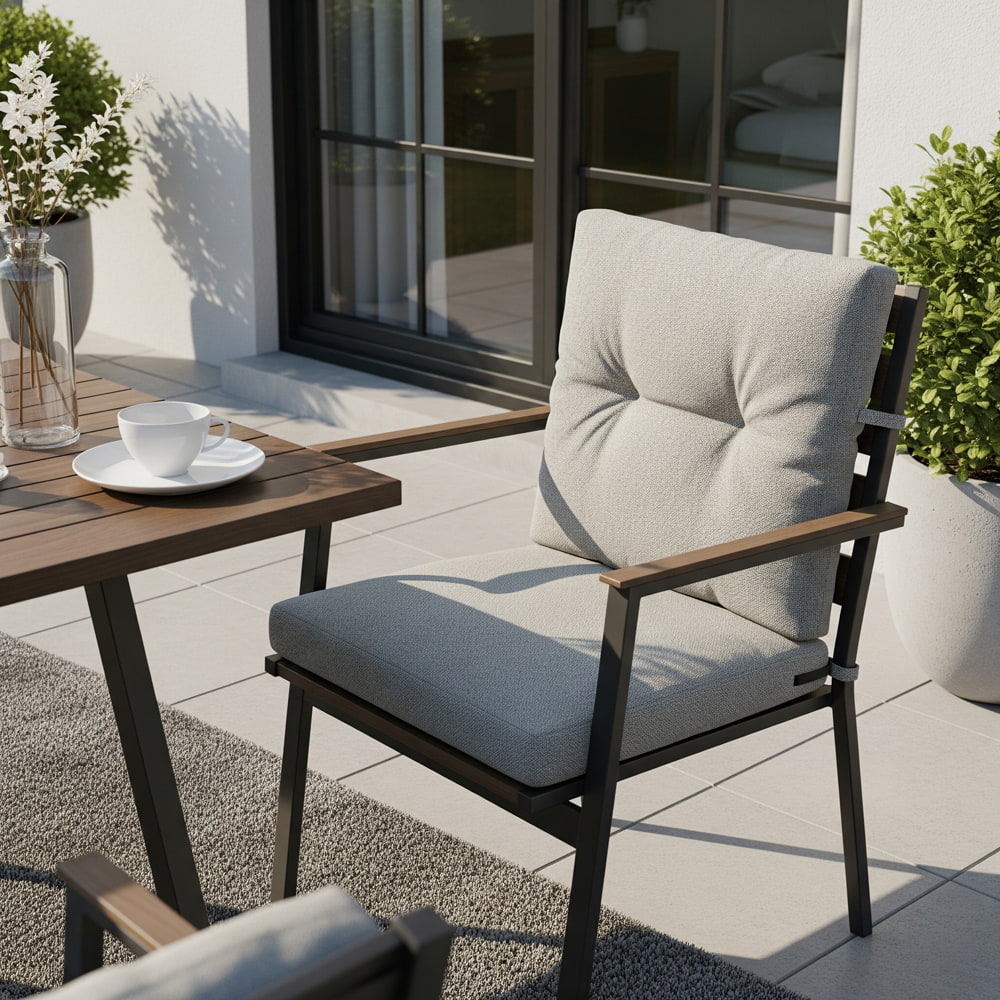
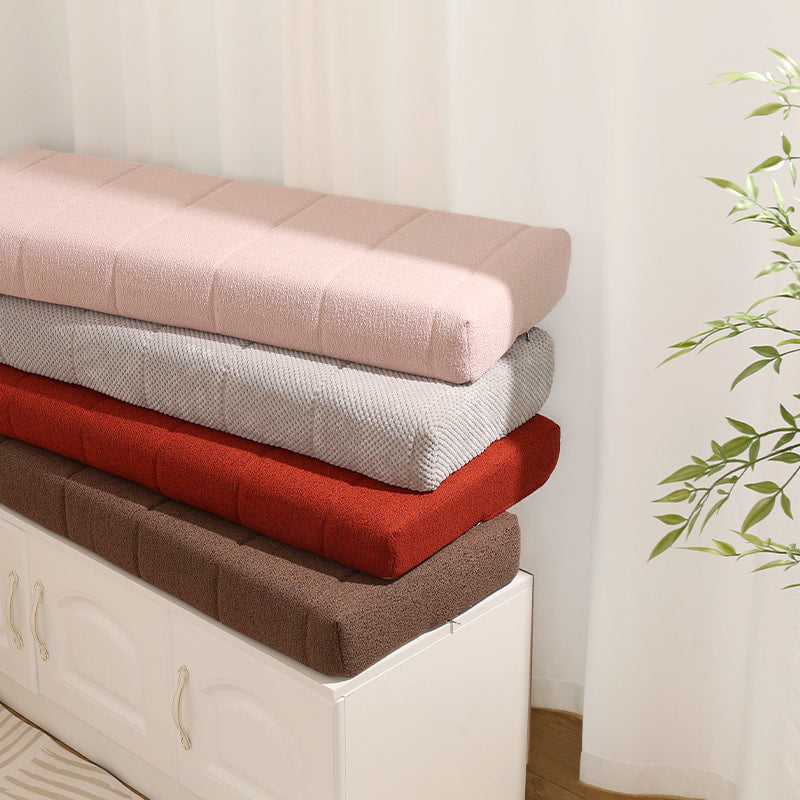

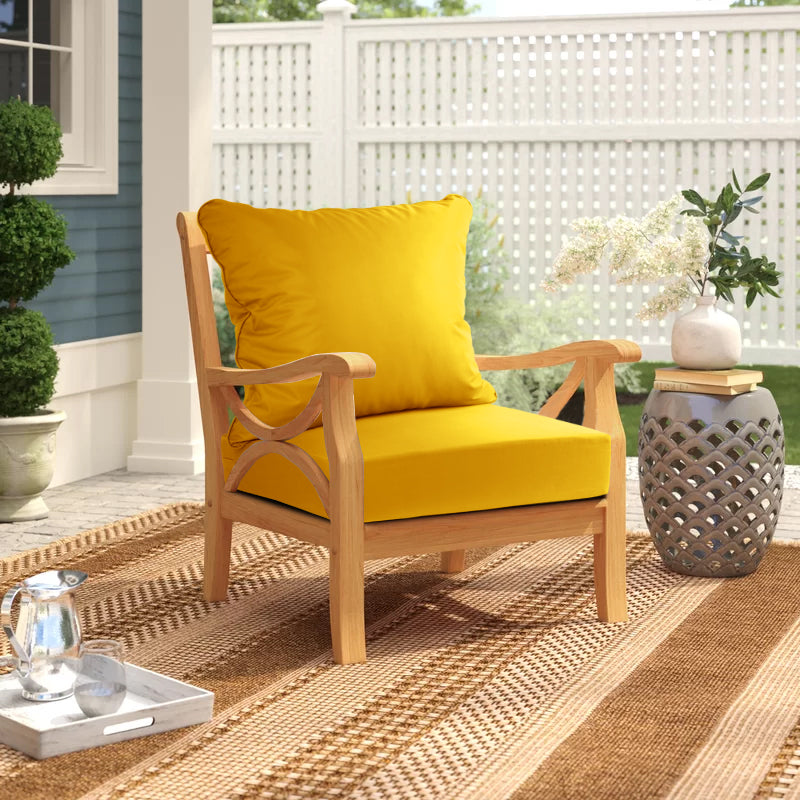
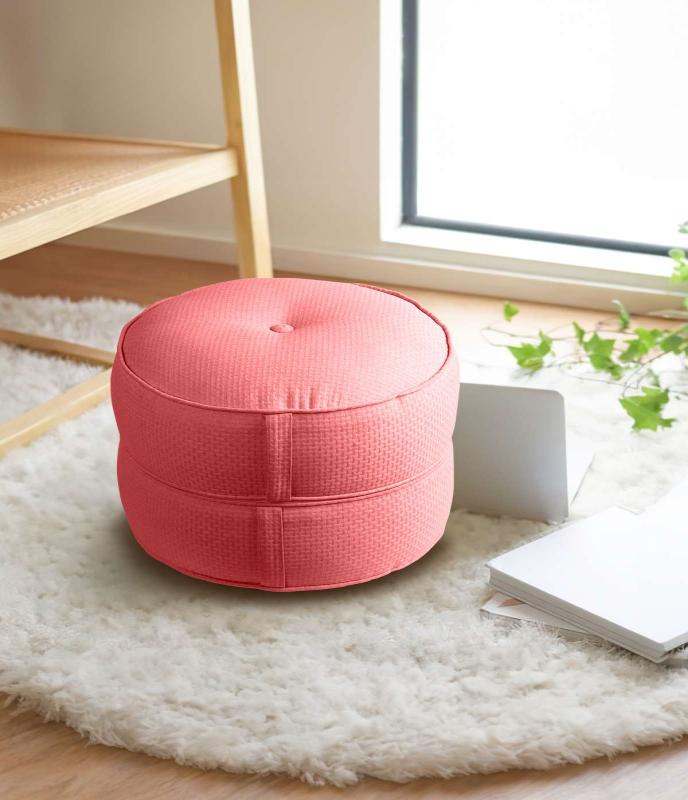
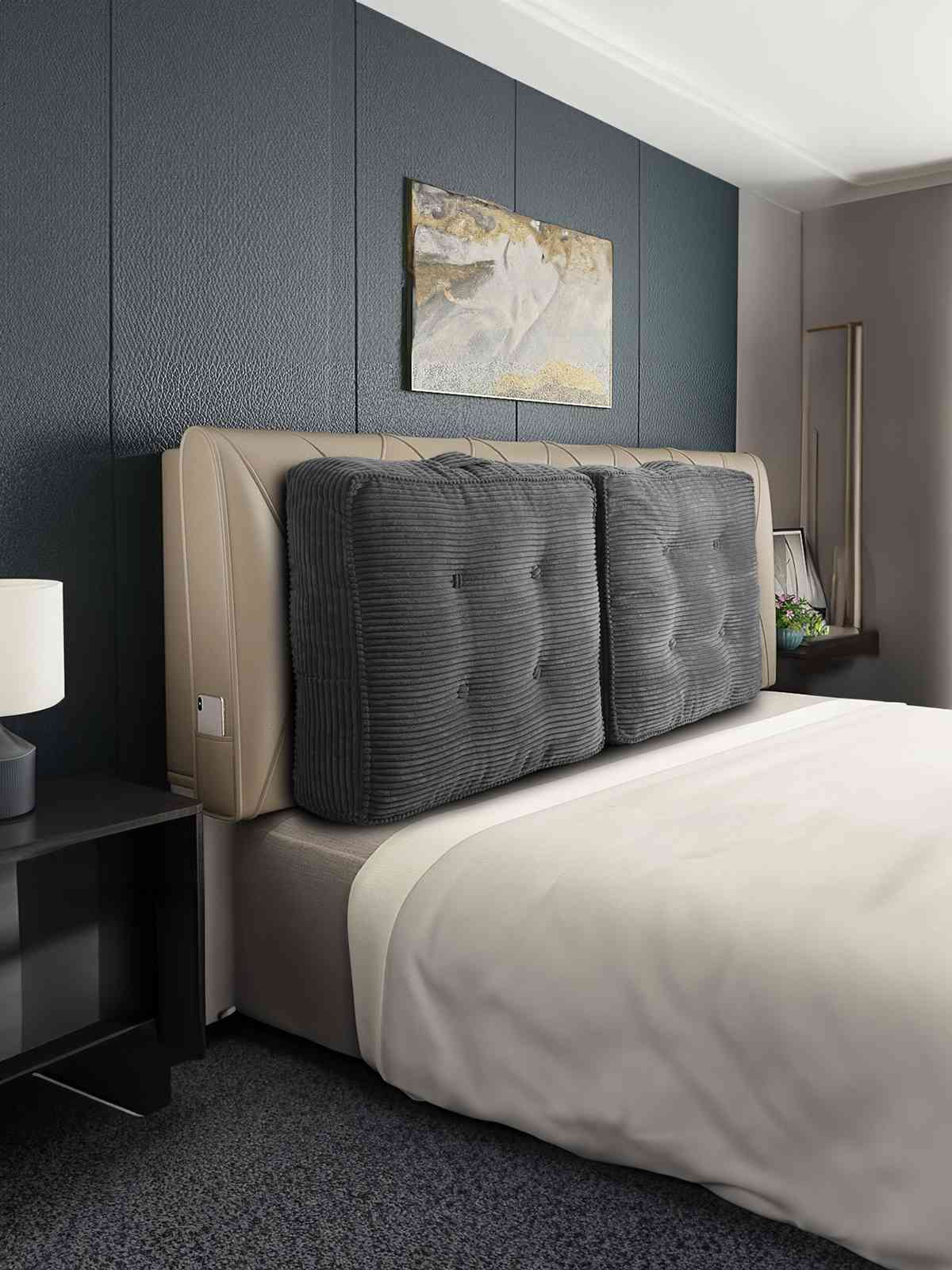
Leave a comment
All comments are moderated before being published.
This site is protected by hCaptcha and the hCaptcha Privacy Policy and Terms of Service apply.